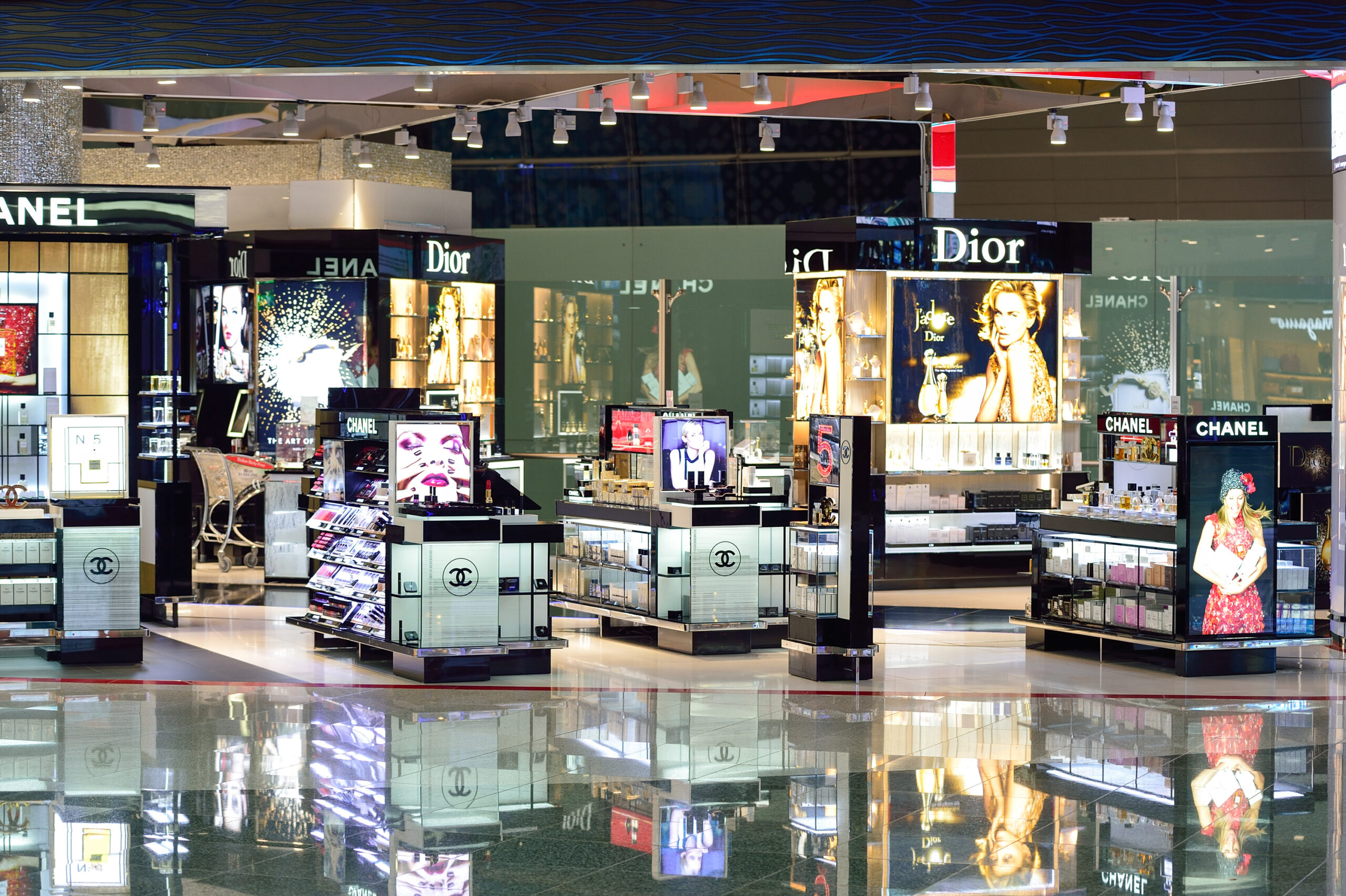Luxury retailers are increasingly turning to international airports as prime locations to connect with luxury buyers, highlighting a growing global demand for luxury retail encounters that appeal to diverse generations of travelers.
This transition capitalises on what Augé observed in 2020, he stated in his book that travellers frequently perceive airports as transitional spaces characterised by constant renewal.
This fosters a distinctive, transient atmosphere distinct from daily routines, where the “tourist gaze” dominates—a purchasing mindset less swayed by everyday stresses, norms, and obligations.

Luxury brands such as Parfums Christian Dior have seized upon this trend, exemplified by initiatives like introducing its La Collection Privée fragrance boutique at New York’s John F. Kennedy International Airport in Terminal One.
In collaboration with International Shoppes, shoppers can explore a range of 22 distinct Dior fragrances alongside a thoughtfully curated assortment of Dior Couture’s Mitzah scarves, sunglasses, and exclusive services such as personalised engraving, all available in-store.
“This boutique symbolizes more than just a partnership or a mere shop; it stands as a beacon of hope, resilience, and the lasting impact of collaboration for the future of travel retail,” remarked Andre Marzloff, Managing Director for Travel Retail Americas at LVMH Beauty, during the opening ceremonies.
This trend is further evident on the West Coast, with San Francisco International Airport (SFO) hosting luxury retail outlets for esteemed brands including Burberry, Gucci, Hermès, and Saint Laurent. Similarly, Los Angeles International Airport (LAX) features stores by renowned names such as All Saints, Porsche Design, and Coach.
Indeed, the trend of luxury retail expansion extends beyond North American airports. Schiphol Airport’s Lounge Two in Amsterdam is undergoing a substantial makeover aimed at redefining the luxury retail experience for its international travellers, featuring retail outlets from renowned brands like BVLGARI and Louis Vuitton.
Aeroporti di Roma in Italy has also intensified its focus on luxury retail by introducing 14 high-end fashion brands, including the debut of stores by Golden Goose and Twin Set.
These revolutionary initiatives come at a time when the travel retail business has the potential for tremendous expansion. Projections show an increase from $79.24 billion in 2023 to $90.41 billion in 2024, or a 14.1% compound annual growth rate.
However, it’s more than just the prospect of growth driving this transition. According to Michael Miraflor, Chief Brand Officer at venture capital firm Hannah Grey, international airports present luxury brands with an opportune moment to captivate the attention of luxury buyers.
“From a practical standpoint, airlines often advise international travellers to arrive at the airport well before their boarding time, and without access to lounge facilities, there are limited activities available; hence, shopping becomes a logical choice,” he explained. “Moreover, for numerous travellers who view international trips as indulgences, making a luxury purchase for sentimental reasons may seem more justifiable.”
Alongside these sentiments is the recognition that airport retail provides luxury brands a unique chance to engage with the younger generation of luxury buyers, who may feel apprehensive about stepping into traditional physical retail stores.
“Gen Z and subsequent generations—these consumers have shifted away from traditional brick-and-mortar retail experiences and prefer more convenient, immediate omnichannel shopping options,” explained Yukun Bi, Chief Strategy Officer at Hylink Group. “Yet, within an airport, it could be one of the initial opportunities for these demographics to engage with the brand and its products truly.”

Bi further elaborated that, looking ahead, airports offer luxury retailers even more avenues for growth through innovative engagement tactics such as pop-up stores. He highlighted locations like Changi Airport and the KrisFlyer lounge for Singapore Airlines, which provide dedicated spaces for brands to feature products and seasonal items, specifically targeting luxury travellers flying in business or first class.
As airports globally adjust their retail offerings in the post-Covid landscape, luxury retailers stand poised to attract global travellers en route to their destinations, presenting them with an opportunity to seize a portion of the $90.41 billion market share for themselves.
In conclusion, the surge of luxury retailers expanding into international airports underscores the evolving dynamics of designer store and the strategic importance of catering to travellers seeking indulgent experiences. With airports serving as dynamic hubs of global connectivity and commerce, high end brands are well-positioned to captivate a diverse audience of travellers, further solidifying their presence in the lucrative travel retail market.
Not only that, as airports continue to adapt and innovate in the post-pandemic era, the collaboration between these designer stores and travel hubs promises to redefine the landscape of luxury retail for years to come.


